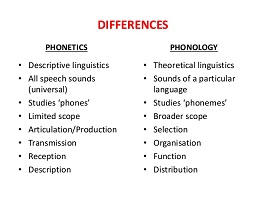Types of phonological processes with definition
Phonological processes
Phonological processes are the patterns that young children use to simplify adult speech. All children use these processes as their speech and language develop. For example, very young children (1 to 3 years old) may say “wa-wa” to ask for “water” or “ato” to say “cat.” Other children may omit the last sound in words (for example, “so” for “sun”). Up to 3 years of age, these are appropriate productions. As children mature, so does their speech and they stop using these patterns to simplify words. In fact, by the age of 5, most children stop using all phonological processes and their speech sounds more like that of the adults around them. In this article we will provide you the Types of phonological processes.
As children stop using the phonological process, their speech becomes more understandable. This allows them to become better communicators. For example, between 1 ½ and 2 years of age, typically developing children can produce about 50 words. Between the ages of 4 ½ and 5 years, children are capable of producing up to 2,000 words. When children continue to apply these processes or patterns to their speech and learn new words at the same time, their speech becomes more difficult to understand. Children often do not hear the differences in words and say a word that means three different words. For example, children who continue to omit the initial consonant of a word can say “eye” which can mean each of these words: red, lame, mojo.
Types of phonological processes
There are different types of phonological processes, among them are:
- Phonetic representation, phonological representation and phonological rules
- Phonological processes
- Assimilation processes: A segment adopts characteristics of another segment.
- Direction and scope of assimilation
- Progressive assimilation
- Regressive assimilation
- Bidirectional assimilation
- Assimilation at a distance
- Loudness assimilation
- Sound
- Deafening
- Articulation mode assimilation
- Nasalization
- Assimilation of place of articulation
- Labialization
- Palatalization
- Velarization
- Assimilation processes in diachrony
- Dissimilation
- Direction and scope of assimilation
- Processes that affect syllabic structure
- Elision
- Epenthesis
- Consonant epenthesis
- Vowel epenthesis
- Processes of epenthesis in diachrony
- Coalescence or fusion
- Consonant coalescence
- Vowel coalescence
- Vowel and consonant coalescence
- Major class changes
- Change from vowel to paravocal



